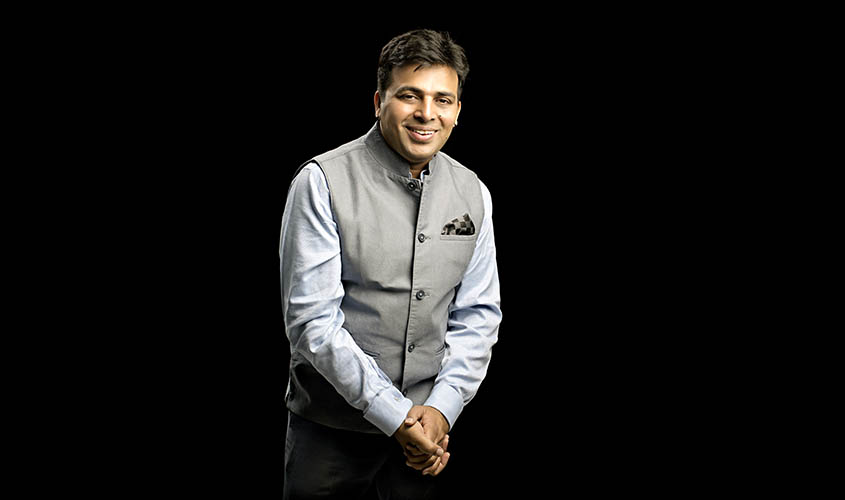One of India’s most successful standup comedians, Amit Tandon speaks to Rishita Roy Chowdhury about being a late bloomer in this field and how the Internet helped him in his career.
Q. You gave up a stable job and ventured into the standup space full-time when you were in your 30s. How did that switch happen?
A. Comedy was never on my roadmap. Till the age of 35-36, I had my own business. I was running a recruitment consulting firm after doing engineering and MBA. I started doing comedy as a hobby after hectic days at work. I enjoyed that. I went for open mics, which provided me with the right opportunities. The kind of material and jokes I was writing connected with the audiences. I cracked jokes about being a husband and a father. Slowly, I started getting offers, as comedy was getting bigger in India. I realised this could also be considered as a profession. Till 2014-15, I was pursuing comedy as hobby and an income on the side of my day job. But by 2016, I started uploading my videos. Somehow the response was really amazing. People across India started watching them. Earlier I was making money from corporate shows and a little bit of money from live shows. After I gained some popularity on YouTube, the earnings from live shows increased a lot. Things exploded for me. So I did live shows in Australia, UK etc. And now I have performed in about 30 countries.
Q. In your experience, how has the standup scene evolved in India?
A. The club culture in India has grown a lot over the last few years. When pubs and clubs started organising standup shows, people started opening up to the idea of live entertainment. Earlier, in order to showcase your talent you had to reach out to a larger number and the only pathways were movies and television. And on these platforms, there were certain set standards and expectations. They have this idea of the kind of comedy that would be well received in the market. Now, you do a particular kind of comedy, you put it on YouTube and there are some people who would still find it funny. You put out exactly what you want to, and your audience will find you. They might not want to watch what’s on television. That’s how the reach grew a lot for us. If we had relied on word-of-mouth, it would have been very difficult. Also, the exposure Indian audience received in terms of comedy has led them to appreciate this profession as an art form.
Q. How would you describe your brand of comedy?
A. Mine is a mix of observational comedy and social commentary. I love to perform comedy on situations we all face in our daily lives. I like to tell jokes that resonate with the audiences. That helps people to connect with my jokes. Our lifestyles have changed so much and that provides such good material. People from all age-groups would know what I am talking about. I also keep my jokes clean because when I started doing this, I already had two kids. So I got used to controlling my language in public. This has helped me to perform anywhere and in front of all sorts of audiences without any stress.
Q. In total, you have performed around 1,500 shows in India and many other countries. Is there any difference between the reactions of national and international audiences?
A. When I perform internationally, I perform for an Indian audience only. But the response is about 40-50% higher outside India. This is because when I perform for them, there’s nostalgia involved. For those people, the joy is greater when somebody from their own country is coming and performing, telling them stories of India. This simple thing adds on to their experience of the show. So the response is definitely much better outside India. Here I must point out, the audience in our country has come a long way in accepting standup culture.
Q. You were among the 47 comics from around the world whose sets were featured on Netflix’s Comedians of the World. How was that experience?
A. It has been a great experience working with Netflix. The web is creating huge opportunities for standup comedians now. I learnt a lot about working behind the camera as well. As a guy who does standup, I never knew what it took to create shows like this. Moreover, I got to share the stage with so many great comedians who came from different parts of the world. It was a showcase of brilliant talent. Netflix is a very big international platform. It has also given me a chance for a new special called Amit Tandon: Family Tandoncies, which will release soon on Netflix.
Q. Any advice for up and coming comedians?
A. Don’t look at what is working in the market right now. Don’t write your stuff based on what people like to watch. Write your material on the basis of what your story is. Don’t try to copy anyone… It’s not like the movie business. If there are 10 comedians who are doing well in India today, every single one has a different voice. No two people have similar sensibilities. Be honest and bring your own self forward.

